The BMW iX1 is only available in one grade, the xDrive30 from $84,900.
The line-up currently starts at $78,900 for the IX1 Edrive20 Xline and ranges through to $84,900 for the range-topping IX1 Xdrive30 M Sport.
Browse over 9,000 car reviews
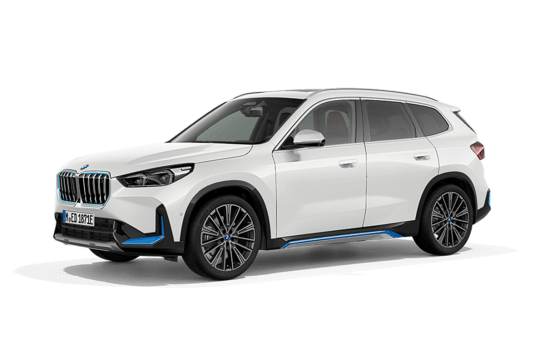
The BMW iX1 is only available in one grade, the xDrive30 from $84,900.
The line-up currently starts at $78,900 for the IX1 Edrive20 Xline and ranges through to $84,900 for the range-topping IX1 Xdrive30 M Sport.

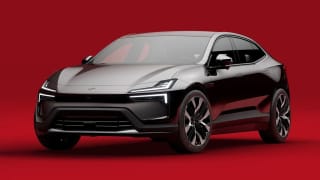
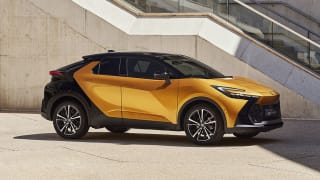
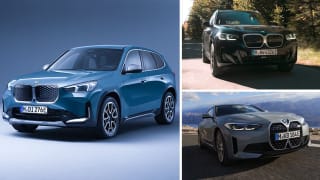

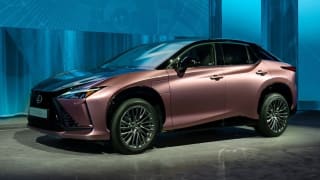
The price range for the BMW IX1 varies based on the trim level you choose. Starting at $78,900 and going to $84,900 for the latest year the model was manufactured. The model range is available in the following body types starting from the engine/transmission specs shown below.
| Year | Body Type | Specs | Price from | Price to | |
|---|---|---|---|---|---|
| 2024 | SUV | —, Electric, 1 SP AUTO | $78,900 | $84,900 | |
| 2023 | SUV | —, Electric, 1 SP AUTO | $74,690 | $92,290 | |
| 2022 | SUV | —, Electric, 1 SP AUTO | — | — | |
The dimensions of the BMW IX1 SUV vary according to year of manufacture and spec level.
| Year | Body Type | Height x Width x Length | Ground Clearance | |
|---|---|---|---|---|
| 2024 | SUV | 1616x1845x4500 mm | 170 mm | |
| 2023 | SUV | 1616x1845x4500 mm | 170 mm | |
| 2022 | SUV | 2580x0x4500 mm | — | |
The iX1 is available in a number of colours. 'Alpine White' is the only ‘flat’ paint, while the standard no-cost-option metallic range for 2023 includes 'Mineral White', 'Black Sapphire', 'Space Silver', 'Phytonic Blue', 'M Portimao Blue', 'San Remo Green', 'Cape York Green' and 'Utah Orange'. Note that not all of these paints are available in the M Sport pack.
Buyers can also choose the BMW Individual 'Frozen Pure Grey' metallic that is $3200 extra, along with hundreds of other special-order hues that cost even more if they’re willing to pay and wait.
At launch, the iX1 is only available in xDrive30 guise, which means having twin electric motors for AWD, a 22kW AC charger and (non-driver-configurable) adaptive dampers.
Buyers also get to enjoy autonomous emergency braking (AEB), lane-support systems, adaptive cruise control, adaptive LED headlights, automatic parking assist, keyless entry/start, a digital key with ultra-wide-band tech, dual-zone climate control, ‘Sensatec’ artificial leather, a reverse camera, DAB+ digital radio, Apple CarPlay/Android Auto connectivity, wireless phone charging, a 10.7-inch multimedia touchscreen, a 10.25-inch digital instrumentation cluster, ‘Hey, BMW!’ voice control, a head-up display, sat-nav with augmented reality view, a powered tailgate, roof rails and 19-inch alloy wheels.
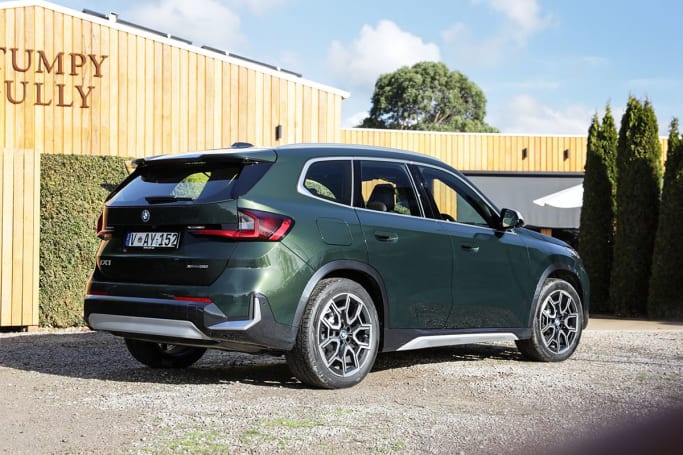
Being a small to medium-sized SUV, you’d expect the X1-based iX1 to be fairly tight interior-space wise, but actually, with a transverse-engine and front-wheel drive architecture basis, it is surprisingly spacious.
Entry and egress is easy due to large doors, the seat cushions are set quite highly, while deep windows and a low dashboard cowl contribute to a light and airy feel.
The rear seat is as spacious as the front seat area, with room to stretch if required.
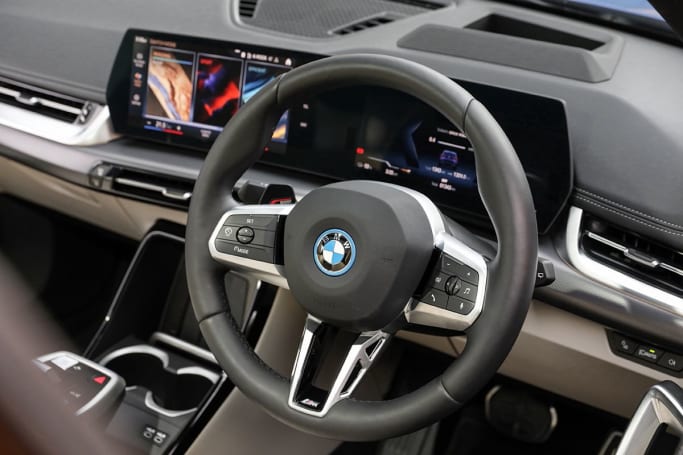
Due to a 40/20/40-split backrest arrangement, the iX1’s cargo capacity increases from 490 litres to 1495 litres. All figures are VDA-rated.
That’s actually slightly down on the regular X1 models, which offers 540-1527L, due to the space demanded by a rear-axle-mounted electric motor and battery pack beneath the rear seats.
Note, too, that there’s no spare tyre, with just a tyre repair kit.
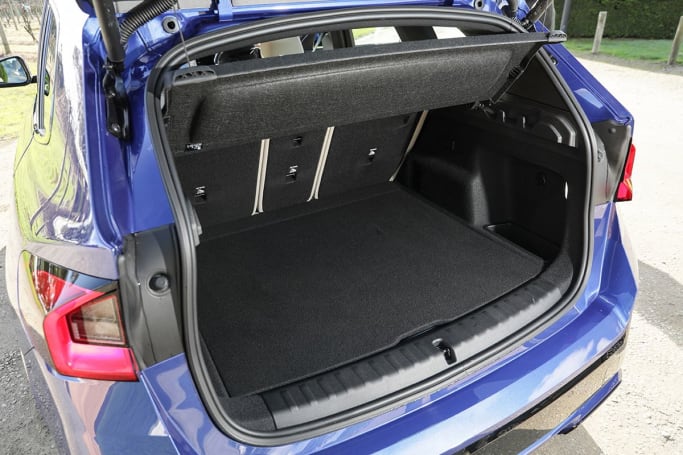
The BMW iX1 can accelerate from 0-100km/h in brisk 5.6 seconds, on the way to a top speed of 180km/h, BMW says.
The BMW iX1 is a five-seater small-to-medium-sized SUV.
Based on the third-generation X1, the U11-series iX1 is the full battery electric version, with two front bucket seats offering electric adjustment for rake as well as reach.
The seats themselves are classed as ‘sports seats’, meaning they have extra bolstering, presumably to brace their occupants from G-forces when the vehicle is cornering hard.
The rear seats are well-shaped as well, and offer a 40/20/40-split folding backrest arrangement to greatly increase luggage capacity into the cabin, as well as a reclining mechanism. The centre portion drops to double up as a ski-port and contains a pair of cupholders.
However, due to the battery being placed beneath the cushion, the iX1 is not available with the slide function that is optional on the internal combustion engine-powered versions.
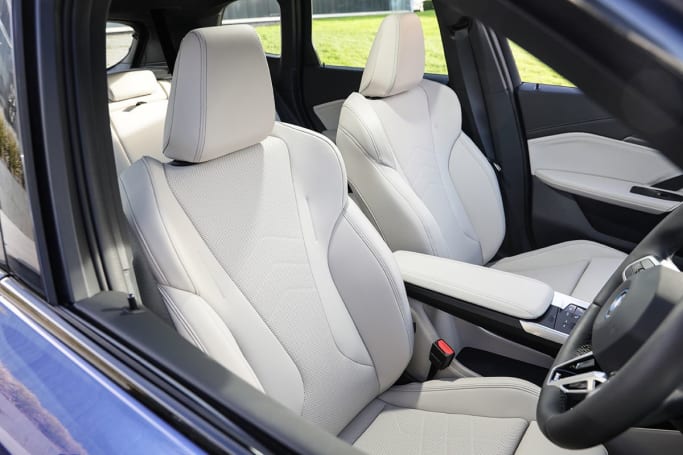
The BMW IX1 has a number of different wheel and tyre options. When it comes to tyres, these range from 225x55 R18 for SUV in 2024.
| Year | Body Type | Front Tyre Size | Front Rim | Rear Tyre Size | Rear Rim | |
|---|---|---|---|---|---|---|
| 2024 | SUV | 225x55 R18 | — | 225x55 R18 | — | |
| 2023 | SUV | 225x55 R18 | — | 225x55 R18 | — | |
The BMW IX1 has maximum towing capacity of 1200kg for the latest model available.
| Year | Body Type | Braked Capacity from | Braked Capacity to | |
|---|---|---|---|---|
| 2024 | SUV | 0kg | 1200kg | |
| 2023 | SUV | 0kg | 1200kg | |
| 2022 | SUV | 0kg | 0kg | |
The BMW IX1 is available in a number of variants and body types that are powered by Electric fuel type(s).
| Year | Body Type | Fuel Consumption* | Engine | Fuel Type | Transmission | |
|---|---|---|---|---|---|---|
| 2024 | SUV | — | — | Electric | 1 SP AUTO | |
| 2023 | SUV | — | — | Electric | 1 SP AUTO | |
| 2022 | SUV | — | — | Electric | 1 SP AUTO | |
The iX1 xDrive30 features BMW’s fifth-generation EV drive, known as eDrive 5.0 M170SF.
It has two electrically excited synchronous electric motors fitted – one on each axle – for all-wheel drive. Drive is via a single-speed reduction gear transmission. The battery pack fitted offers 67kWh.
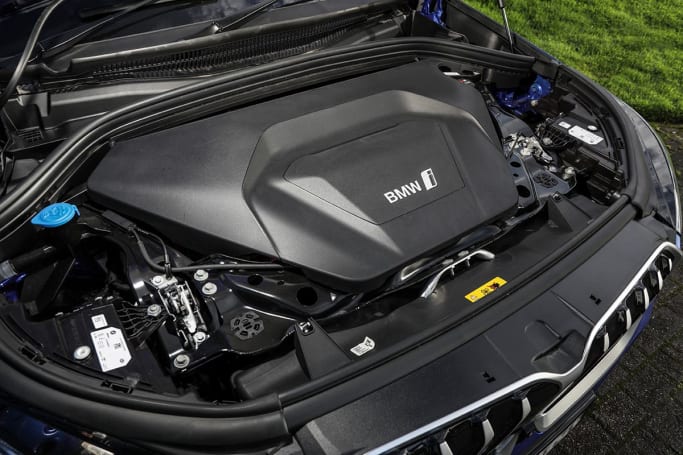
All figures are on the ADR 81/02 test cycle.
BMW says the xDrive30 consumes an average of 18.3kWh/100km – somewhat less than the 21.3kWh/100km that the iX1’s own trip computer displayed.
The 67kWh lithium-ion battery pack offers a useable 65kWh, for a ADR 81/02-rated range of 400km.